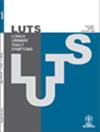Investigating the Antihyperplastic, Anti-Inflammatory and Antioxidant Properties of Cucurbita Pepo L. Seed Oil on Testosterone- Induced Benign Prostatic Hyperplasia (BPH) in Castrated Rat Model
Abstract
Objective
The present study investigates the therapeutic potential of Cucurbita Pepo L. Seeds' Oil (CPSO) extracted by petroleum ether on testosterone-induced hyperplasia (BPH) in a castrated Wistar rat model.
Materials and Methods
Animals underwent two stages of treatment (28 days each): the testosterone treatment stage, to promote BPH, and the therapeutic stage, which consisted of an oral administration of CPSO. Forty-eight Wistar rats were equally divided into six groups: the negative control; groups 2–6 underwent a bilateral orchidectomy (induced via the scrotal route), then were redistributed into the castrated-control group and the castrated and testosterone-treated groups BPH induction (10 mg/kg). Twenty-eight days after BPH induction, the BPH rats were orally treated with Finasteride (FINA group: 5 mg/kg/d) and CPSO (CPSO-1 group: 40 mg/kg/d; CPSO-2 group: 80 mg/kg/d) for 28 additional days. Plasma biochemical parameters, circulating testosterone (T) and prostate-specific antigen (PSA), prostate oxidative markers, and inflammation were analyzed.
Results
CPSO administration exhibited a decrease in prostate weight, normalized the plasma total proteins, lipids, calcium and glucose, testosterone, and PSA levels, and attenuated the disturbances of liver and kidney functions in BPH rats. At the prostate level, CPSO showed a notably decreased prostate oxidation and inflammation. The histological study showed that CPSO restored prostatic lesions caused by BPH.
Conclusion
According to the present results, we suggest that CPSO could have a protective potential related to its proven anti-oxidant, anti-hyperplastic, and anti-inflammatory properties on preventing testosterone-induced BPH in castrated rats and might be used as an herbal remedy or nutraceutical agent in BPH management.

 求助内容:
求助内容: 应助结果提醒方式:
应助结果提醒方式:


